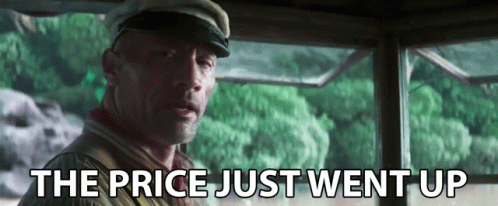- Conquer Sales Newsletter
- Posts
- #10 The Art of Pricing
#10 The Art of Pricing
How to Set the Right Price for Your Solution
In the world of business, one decision can significantly impact your bottom line: pricing.
Whether you're selling a product, a service, or a solution, setting the right price is crucial. It can be the difference between a business that thrives and one that merely survives.
So how do you determine the 'right' price for your solution?

The process involves understanding your costs, studying the market, exploring various pricing strategies, testing different price points, and considering discounts and promotions.
This edition of Conquer Sales will endeavour to guide you through these steps to help you price your solution effectively.
Agenda:
Introduction
Understanding Costs
Understanding the Market
Pricing Strategies
The Importance of A/B Testing in Pricing
The Role of Discounts and Promotions
Understanding Costs
One of the first steps in pricing your solution is understanding your costs, which can be broken down into direct and indirect costs.
Direct costs include all the expenses directly tied to the creation of your solution, such as raw materials, labor, and manufacturing costs. It's relatively straightforward to calculate these.
Indirect costs, on the other hand, can be more challenging to identify and quantify. These can include overhead expenses like rent, utilities, and salaries of non-production employees, as well as intangible costs like R&D, marketing, and customer service. It's important to account for these indirect costs when pricing your solution because they contribute to your ability to deliver the solution and need to be recouped through your pricing.
Understanding the Market
Next, it's crucial to understand the market in which you're operating. This involves studying your competitors' pricing strategies and understanding your customers' willingness to pay. Researching competitor pricing can give you a sense of the price range for similar solutions in your industry.
However, don’t base your pricing solely on what your competitors are doing, as their costs and business goals might be different from yours.
Understanding your customers' willingness to pay is equally important.
This involves understanding the value that your customers perceive in your solution and how much they're willing to pay for that value. This can be gauged through customer surveys, focus groups, and market research.
Pricing Strategies
Once you understand your costs and the market, you can explore various pricing strategies.
One common strategy is cost-plus pricing, where you set your price by adding a markup to your total costs. This strategy ensures you cover your costs and make a profit, but it might not always reflect the value that customers perceive in your solution.
Another strategy is value-based pricing, where you set your price based on the perceived value of your solution to customers. This strategy can be more profitable than cost-plus pricing, as it allows you to capture more value if your customers perceive a high value in your solution.
Market-oriented pricing is another strategy, where you set your price based on what the market is willing to pay. This strategy requires a deep understanding of your market and might involve pricing your solution competitively to gain market share.

The Importance of A/B Testing in Pricing
A/B testing, or split testing, is a method where you compare two versions of a webpage to see which performs better.
You can use this strategy in pricing as well to test different price points and see which results in better sales or profitability.
The idea is simple: you offer the same solution at two different prices to different segments of your customers. Then, you analyze the results to see which price point generated more sales or higher profitability. This can provide valuable insights into your customers' price sensitivity and willingness to pay, helping you refine your pricing strategy.
The Role of Discounts and Promotions
I’ve often said that I don’t agree with discounts!
They can be a valuable tool in your pricing strategy, but they need to be used carefully.
While they can drive sales and attract new customers, they can also devalue your solution if used excessively.
Offering occasional discounts or promotions can create a sense of urgency and incentivize customers to purchase.
However, it's important to ensure these discounts and promotions are sustainable and don't compromise your profitability.
You can also use them in the context of a negotiation but don’t give something for nothing. Play with terms of payment, or contract length, or anything that you find valuable in exchange for lowering your price.
Conclusion
Pricing your solution is both an art and a science.
It involves
understanding your costs,
studying the market,
exploring different pricing strategies,
testing different price points, and
considering discounts and promotions.
By taking the time to understand these factors and apply them effectively, you can set a price that not only covers your costs and ensures profitability, but also aligns with your customers' perceived value of your solution.
It's a dynamic number that might need to be adjusted as your costs change, the market evolves, or as you gain more insight into your customers' willingness to pay.
So, keep monitoring, testing, and adjusting your price as needed to stay competitive and profitable.
Reply